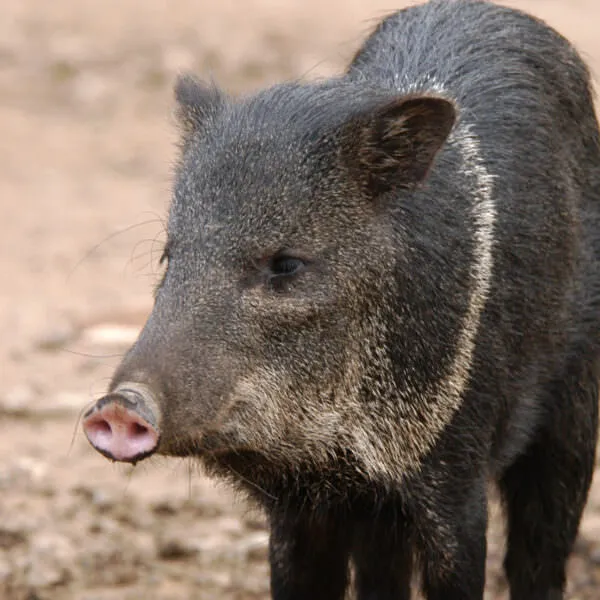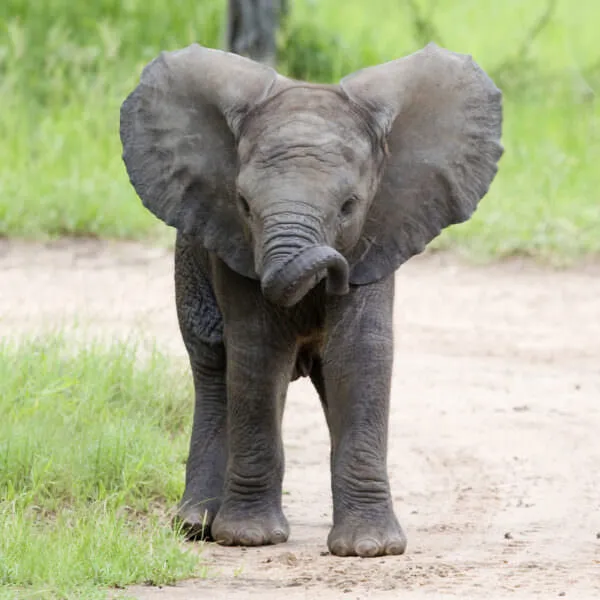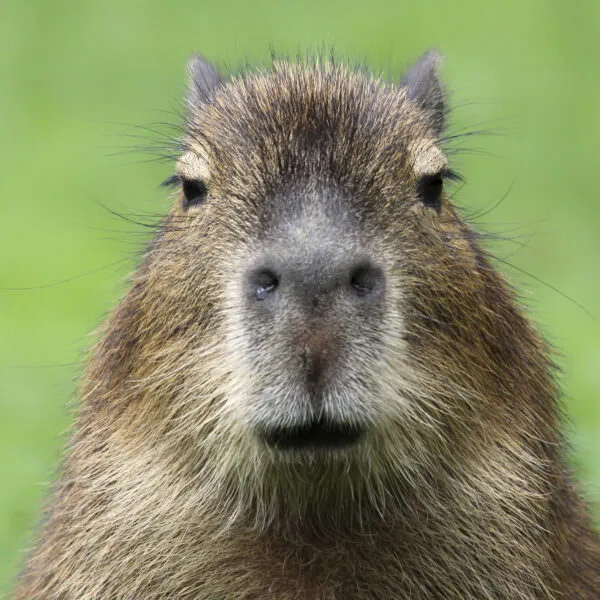Anatomy
With an average length of 3.7 – 4.7 cm, Honduran white bats are tiny for a bat. True to their name, they have a fluffy white coat. Their ears, face, nose and parts of their legs and wings are bright orange. Almost no hair grows on their black wings. Since their nose protrudes from their face in a triangular shape, scientists call members of their family « leaf-nosed bats. » There is a thin, black membrane covering their skull that might provide the bats with protection from ultraviolet radiation—a natural form of sunscreen!
We're All In
Together, we're building a future where people and nature thrive. Sign up today and join our movement...
Habitat
Honduran white bats live only in the lowland rainforests of eastern Honduras, northern Nicaragua, eastern Costa Rica and western Panama. They live in rainforests that have heliconia plants. By cutting along the veins of heliconia leaves, these bats force the leaves to collapse into upside-down V-shaped « tents » that might shelter only one bat, or as many as twelve bats.
When they roost, they hang close together upside down in the center of the leaf. The tents help protect them during the daytime from rain, the hot sun and predators. In fact, the bats choose leaves that are six feet off the ground—high enough to be out of the reach of terrestrial predators. Also, the stems of heliconia plants are not very strong, so any predator brushing against the leaf causes the bats’ tent to shake. This alerts the bats to danger and they fly quickly away.
Why do Honduran white bats have bright white coats? Why are they not green like the leaves they hide inside? When the sun shines through the leaves of their tent, it makes the bats’ white coat appear green, making them hard to spot! However, their tent is not home sweet home for long. The bats rarely return to the same tent for more than a day.
Diet
During the day, Honduran white bats roost under their tents. At night, they emerge to search for food. However, these creatures are not looking to suck your blood—they only eat fruit or vegetation.
Threats
Since Honduran white bats live mainly under heliconia leaves, rainforest destruction is a serious threat. For this species to survive, rainforests in the Central American lowlands that have heliconia must remain standing. Natural predators may include opossums, snakes and other carnivorous animals.
Sources
- Jukofsky, Diane. Encyclopedia of Rainforests. Connecticut: Oryx Press, 2002.
- Casebeer, R.S., Linsky, R. B. and C. E. Nelson. 1963. The phyllostomid bats, Ectophylla alba and Vampyrum spectrum, in Costa Rica. Journal of Mammalogy. 44: 186 – 189.
- Timm, R. and J. Mortimer. 1976. Selection of roost sites by Honduran white bats, Ectophylla alba (Chiroptera: Phyllostomatidae). Ecology. 57: 385 – 389.
- University of Michigan Museum of Zoology
- The IUCN Red List of Threatened Species
- Small photo by Geoff Galice



